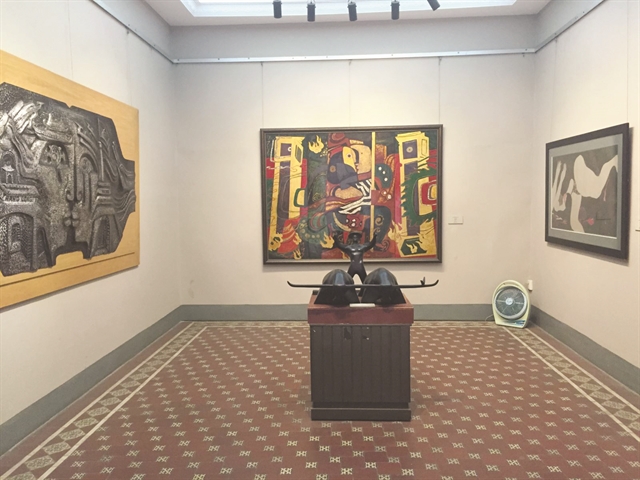
Digitisation helps the museum reach a wider audience, promotes cultural heritage values and increases interaction between the museum and the public. VNA/VNS Photo
HCM CITY — Most museums in HCM City are in the process of restoring, upgrading and rearranging their display systems after long closures imposed by the COVID-19 pandemic.
The news that the War Remnants Museum, Southern Women's Museum, History Museum, Áo Dài Museum and HCM City Museum were ready to welcome international tourists was widely welcomed last month.
The War Remnants Museum in District 3 has been one of the most popular draws in the city for international.
In 2019, the museum welcomed about 3000 people a day, more than 70 per cent of them international tourists. Now, despite the pandemic situation having eased, the number of visitors has dropped to as low as 100 a day.
Nguyễn Trần Tâm Hà, deputy director of the War Remnants Museum, said that to welcome international visitors back, they were focusing on upgrading its thematic galleries.
The museum is also collaborating with the United States on the topic of post-war remedial action that future visitors can learn about.
The Southern Women's Museum in District 3 has also renovated its infrastructure to create a more modern space. Its exhibition areas are being rearranged with more attractive content and themes.
Museum director Nguyễn Thị Thắm said that they now meet the criteria for epidemic prevention to welcome international guests. The museum also plans to organise more cultural activities to enrich visitors’ experiences.
“In the near future, the museum will coordinate with travel agencies and restaurants to organise culinary events that will allow visitors to enjoy special southern dishes. We also want to open the Áo Dài show every weekend.”
Digitising data
Besides enlarging its physical collection, the HCM City Museum of History is digitising data on existing artefacts and deploying AI and virtual 3D technology for future development.
Visitors to the HCM Museum of History can now read in depth information about any artefact by using touchscreens or scanning a QR code on their mobile phones.
Deputy director Nguyễn Khắc Xuân Thi said they were trying to become a “smart museum”, following the general worldwide trend. They were also working to introduce more cultural heritage education programmes and student tours.
Several performances featuring water puppetry and bội singing have been scheduled for the near future. Further information about these will be posted on the museum’s social media channels such as YouTube and Facebook, Thi said.
Many experts believe that digital transformation is a new step museums should take to become more and more attractive, especially to young people.
Thắm, director of the Southern Women's Museum, said that digitisation will help visitors interact with artefacts at a deeper level.
Furthermore, when emergencies like pandemics occur, it is essential that museums organise online exhibitions, he said.
Digitisation not only helps the museum reach a wider audience and promote cultural heritage values, it also increases interaction between the museum and the public, he added. — VNS
OVietnam